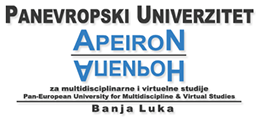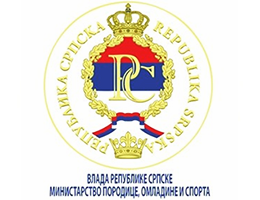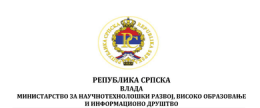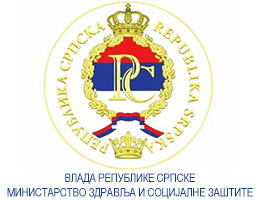TНE INFLUENCE OF ORGANIZED PНYSICAL EXERCISE ON ТНE ТIME SPENТ IN MVPA OF ELEMENТARY SCНOOL SТUDENТS
Volume 12, Issue 2 (2022)
Bajric, O., Goranović, S., & Bajric, S. (2019). Teachers sttitudes on sports talent in primary school pupils transferring from class to subject teaching. Sports Science & Health / Sportske Nauke i Zdravlje, 9(2). [in Serbian]
Corder, K., Werneck, A. O., Jong, S. T., Hoare, E., Brown, H. E., Foubister, C., ... & van Sluijs, E. M. (2020). Pathways to increasing adolescent physical activity and wellbeing: a mediation analysis of intervention components designed using a participatory approach. Interna- tional journal of environmental research and public health, 17(2), 390.
Ekelund, U., Luan, J. A., Sherar, L. B., Esliger, D. W., Griew, P., Cooper, A., & International Children’s Accelerometry Database (ICAD) Col- laborators. (2012). Moderate to vigorous physical activity and sedentary time and cardiometabolic risk factors in children and adoles- cents. Jama, 307(7), 704-712.
Evenson KR, Catellier DJ, Gill K, Ondrak KS, McMurray RG. Calibration of two objective measures of physical activity for children. J Sports Sci. 2008;26:1557–65.
Jago, R., Edwards, M. J., Sebire, S. J., Tomkinson, K., Bird, E. L., Banfield, K., ... & Blair, P. S. (2015). Effect and cost of an after-school dance programme on the physical activity of 11–12 year old girls: The Bristol Girls Dance Project, a school-based cluster randomised controlled trial. International Journal of Behavioral Nutrition and Physical Activity, 12(1), 1-15.
Jago, R., Sebire, S. J., Cooper, A. R., Haase, A. M., Powell, J., Davis, L., ... & Montgomery, A. A. (2012). Bristol girls dance project feasibility trial: outcome and process evaluation results. International Journal of Behavioral Nutrition and Physical Activity, 9(1), 1-10.
Kermeci, S., & Đorđić, V.N. (2018). The role of recess in students’ physical activity promotion. Sports Science & Health/Sportske Nauke i Zdravlje, 8(2). [in Serbian]
Kriemler, S., Meyer, U., Martin, E., van Sluijs, E. M., Andersen, L. B., & Martin, B. W. (2011). Effect of school-based interventions on physical activity and fitness in children and adolescents: a review of reviews and systematic update. British journal of sports medicine, 45(11), 923-930.
Lepeš, J. (2011). Socijalno-porodična sredina, ishrana i fizički razvoj. Sportfiske nauke i zdravlje, 1(1), 12-17. [in Serbian]
Lukić, N., Vukićević, V., Vignjević, S., & Škundrić, G. (2019). Motivational orientation of primary school students in physical education classes. Sports Science & Health/Sportske Nauke i Zdravlje, 9(2). [in Serbian]
O’Donovan, T. M., & Kay, T. A. (2005). Focus on girls in sport. British Journal of Teaching Physical Education, 36(1), 29-31.
Resaland, G. K., Moe, V. F., Bartholomew, J. B., Andersen, L. B., McKay, H. A., Anderssen, S. A., & Aadland, E. (2018). Gender-specific ef- fects of physical activity on children’s academic performance: the active smarter kids cluster randomized controlled trial. Preventive medicine, 106, 171-176.
Strong, W. B., Malina, R. M., Blimkie, C. J., Daniels, S. R., Dishman, R. K., Gutin, B., ... & Trudeau, F. (2005). Evidence based physical activ- ity for school-age youth. The Journal of pediatrics, 146(6), 732-737.
Telford, R. M., Olive, L. S., Cochrane, T., Davey, R., & Telford, R. D. (2016). Outcomes of a four-year specialist-taught physical education program on physical activity: A cluster randomized controlled trial, the LOOK study. International Journal of Behavioral Nutrition and Physical Activity, 13(1), 1-11.
Telford, R. M., Olive, L. S., Keegan, R. J., Keegan, S., Barnett, L. M., & Telford, R. D. (2021). Student outcomes of the physical education and physical literacy (PEPL) approach: a pragmatic cluster randomised controlled trial of a multicomponent intervention to improve physical literacy in primary schools. Physical Education and Sport Pedagogy, 26(1), 97-110.
Troiano, R. P., Berrigan, D., Dodd, K. W., Masse, L. C., Tilert, T., & McDowell, M. (2008). Physical activity in the United States measured by accelerometer. Medicine and science in sports and exercise, 40(1), 181.
World Health Organization. (2019). Global action plan on physical activity 2018-2030: more active people for a healthier world. World Health Organization.





